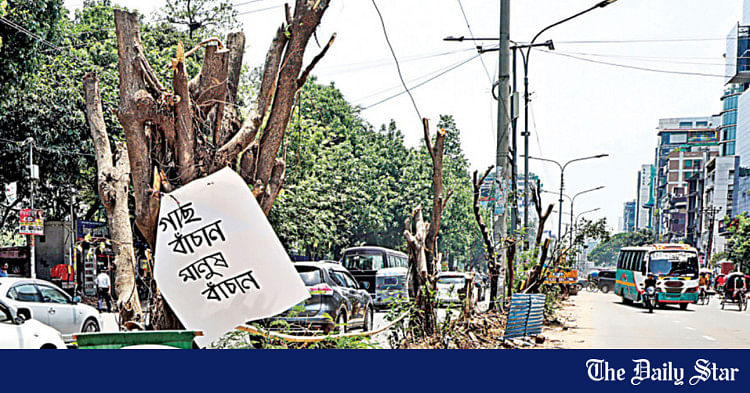- Copy to clipboard
- Thread starter
- #451
Saif
Senior Member
- Messages
- 14,475
- Reaction score
- 7,588
- Origin

- Residence

- Axis Group


‘Degraded Airshed’ to be identified to control Dhaka’s air pollution: Adviser
The government is set to announce ‘Degraded Airshed’ zones in Dhaka city soon to combat worsening air pollution, said Environment Adviser Syeda Rizwana Hasan. “An expert committee will be formed to provide scientific recommendations on the matter,” she told a meeting at the
‘Degraded Airshed’ to be identified to control Dhaka’s air pollution: Adviser
UNB
Published :
Jul 01, 2025 22:00
Updated :
Jul 01, 2025 22:00
The government is set to announce ‘Degraded Airshed’ zones in Dhaka city soon to combat worsening air pollution, said Environment Adviser Syeda Rizwana Hasan.
“An expert committee will be formed to provide scientific recommendations on the matter,” she told a meeting at the Department of Environment office in Agargaon, Dhaka on Tuesday.
The adviser emphasised the need for effective measures to control air pollution in the capital, and instructed officials of the Department to take prompt and effective action.
Under the Environment Conservation Rules, 1997, an area within the same air flow zone is designated as a ‘Degraded Airshed’ if the air quality standard is exceeded due to pollution.
The adviser said brick kilns in key locations, including the hill tracts of Chattogram and Ramgati in Lakshmipur, will be prohibited to reduce pollution.
Continuous drives against expired vehicles will be conducted in cooperation with the Bangladesh Road Transport Authority (BRTA).
Officials of the Department of Environment were directed to take legal action against illegal dumping of construction materials, burning of waste in parks or open areas, and leaf burning.
She also highlighted the importance of community involvement in implementing Dhaka city’s ‘Zero Soil’ programme. No area in the city should be left barren; tree planting must be carried out everywhere.
Hotspots for leaf burning should be identified and awareness campaigns launched, including distributing leaflets in educational institutions and advertising in the media.
The Environment Adviser ordered operations against sand dumping in Amin Bazar and urged the active participation of volunteers in tree planting activities.
UNB
Published :
Jul 01, 2025 22:00
Updated :
Jul 01, 2025 22:00
The government is set to announce ‘Degraded Airshed’ zones in Dhaka city soon to combat worsening air pollution, said Environment Adviser Syeda Rizwana Hasan.
“An expert committee will be formed to provide scientific recommendations on the matter,” she told a meeting at the Department of Environment office in Agargaon, Dhaka on Tuesday.
The adviser emphasised the need for effective measures to control air pollution in the capital, and instructed officials of the Department to take prompt and effective action.
Under the Environment Conservation Rules, 1997, an area within the same air flow zone is designated as a ‘Degraded Airshed’ if the air quality standard is exceeded due to pollution.
The adviser said brick kilns in key locations, including the hill tracts of Chattogram and Ramgati in Lakshmipur, will be prohibited to reduce pollution.
Continuous drives against expired vehicles will be conducted in cooperation with the Bangladesh Road Transport Authority (BRTA).
Officials of the Department of Environment were directed to take legal action against illegal dumping of construction materials, burning of waste in parks or open areas, and leaf burning.
She also highlighted the importance of community involvement in implementing Dhaka city’s ‘Zero Soil’ programme. No area in the city should be left barren; tree planting must be carried out everywhere.
Hotspots for leaf burning should be identified and awareness campaigns launched, including distributing leaflets in educational institutions and advertising in the media.
The Environment Adviser ordered operations against sand dumping in Amin Bazar and urged the active participation of volunteers in tree planting activities.














